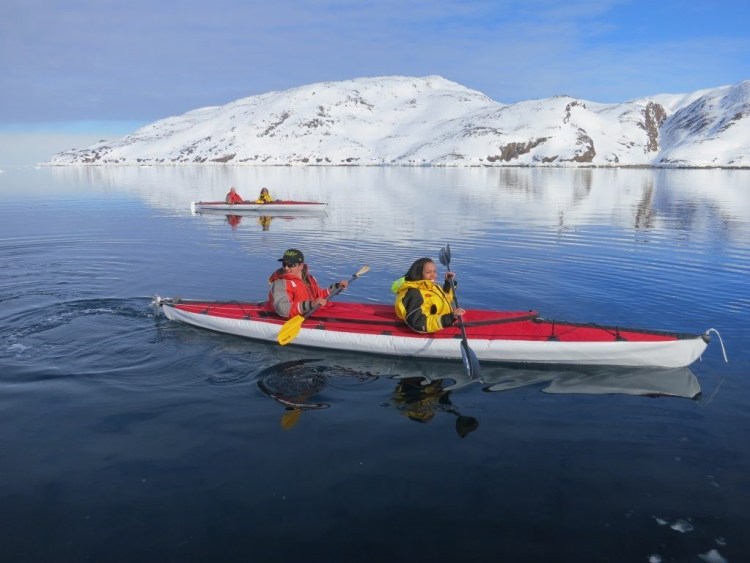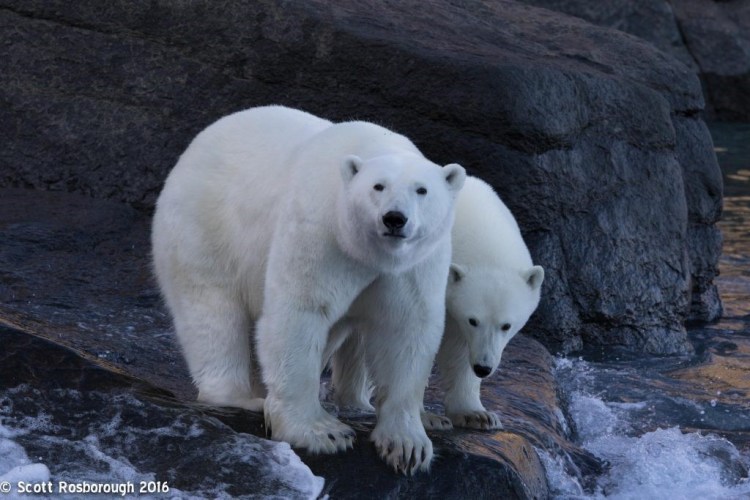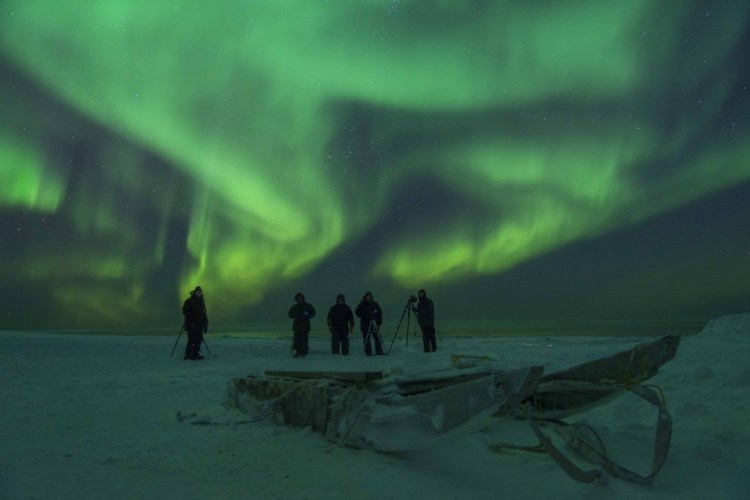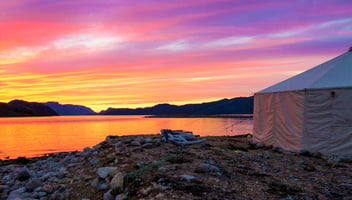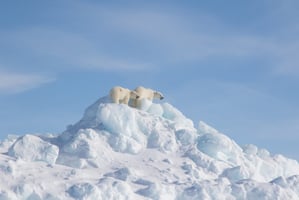Interested in travelling to the Arctic but wondering what the accommodations will be like? Are you...
With dramatic landscapes and ice formations, unique wildlife, and incredible natural phenomena at any time of year, visiting the Arctic is a once in a lifetime opportunity for many travellers, adventurers, and photographers. We’re thrilled to help people around the world plan their bucket-list experience and find the best time to visit the Arctic.
Picking the time of year to travel is one of the most important things to consider when planning your Arctic adventure. Unlike tropical vacations where you can expect sun and sand throughout the year, the Arctic is always changing and evolving.
While we run polar bear tours from March to November, the different seasons also bring a variety of amazing experiences. Depending on what you want to see and how you want to explore– whether it’s viewing rare wildlife like narwhal, incredible glaciers, the midnight sun or the Northern Lights– there is a season for you in the Arctic.
Here’s what you can look forward to throughout the year:
Early Spring – March and April
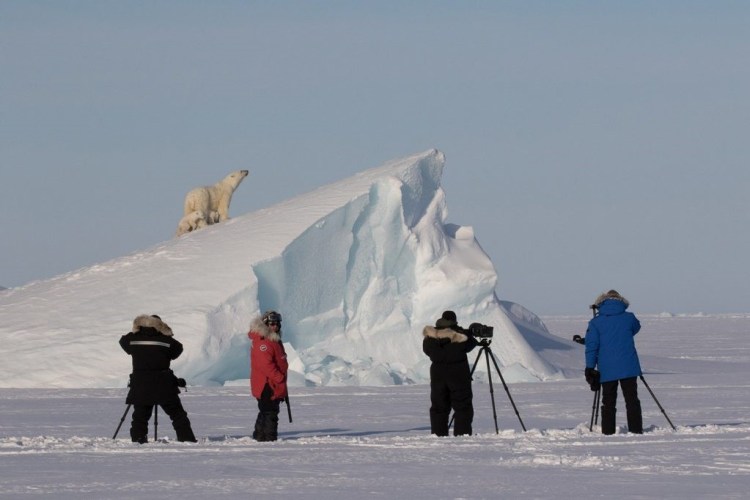
This is one of the best times to visit the arctic for adventurous travellers looking for unique, award-winning polar bear photography opportunities and the chance to view the Northern Lights.
Polar bears & newborn cubs
The opportunities for polar bear (and possibly cubs!) photography are incredible during this season. Depending on the location you travel to, you may have the chance to see polar bear mothers and newborn cubs as they leave their dens for the first time, or polar bears lounging on sea ice and climbing majestic icebergs.
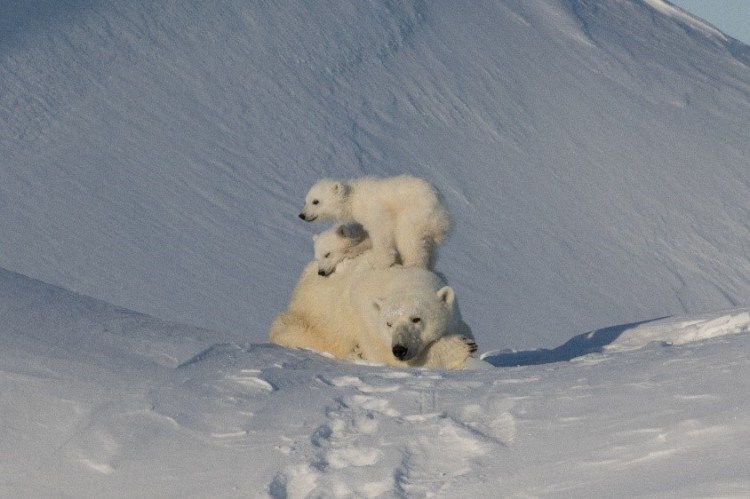
For polar bear mothers and newborn cubs, you’ll want to visit one of the world’s largest denning areas, Wapusk National Park, on Polar Bear Mother & Newborn Cubs.
For the chance to see polar bear mothers and newborn cubs above the Arctic Circle after they have left their dens and roam the sea ice, check out Spring Polar Bears & Icebergs of Baffin Photo Safari.
Northern Lights
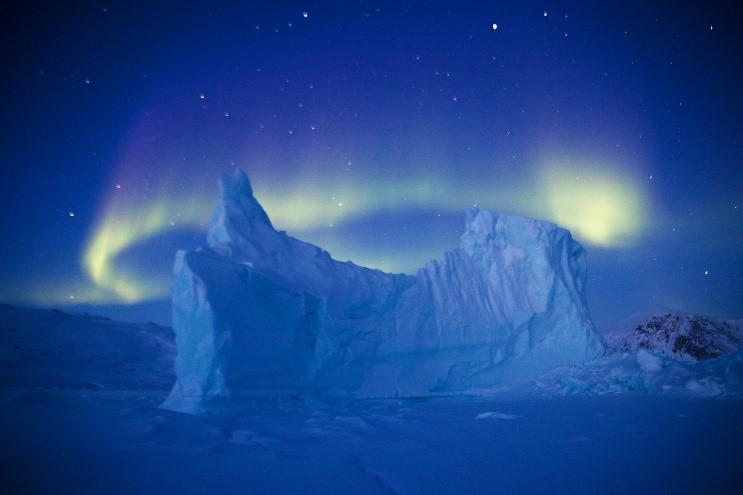
On Spring Polar Bears & Icebergs of Baffin Safari you can get the chance to witness the splendor of the Northern Lights against the background of enormous icebergs.
Conditions
Travelling at the end of the Arctic’s cold season can mean more extreme weather with average daily temperatures ranging between -15°C and -29°C (5 to -20°F) but can drop as low as -40°C (-40°F). While cold, you can still have an enjoyable experience with the right gear! We offer a Polar Clothing Rental Package to keep you comfortable no matter what Mother Nature brings.
Experience early spring in the Arctic on these trips:
Spring Polar Bears & Icebergs of Baffin
Polar Bear Mother & Newborn Cubs
Spring – May and June
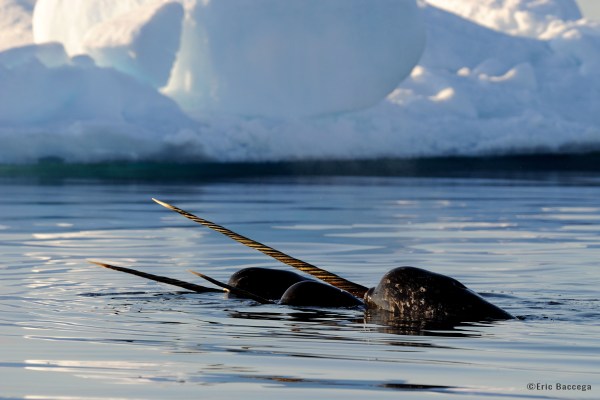
This is floe edge season! The floe edge, also known as the “line of life”, is where the land-fast ice meets the open water. It is also where all Arctic marine mammals come to mingle.
Iconic Arctic wildlife: whales, polar bears & more
Throughout May and June, you can have opportunities for Arctic whale watching – including the chance to see narwhal, beluga and bowhead whales – as well as possibilities to see other wildlife like polar bears and thousands of bird species.
If you are dreaming of spotting the elusive and mystical narwhal, this is the best time of year to visit the Arctic. Narwhal, who live solely in the Arctic, migrate this time of year from their winter home to their summer feeding grounds. This makes the floe edge at this time of year the only place you can get chances to see narwhal.
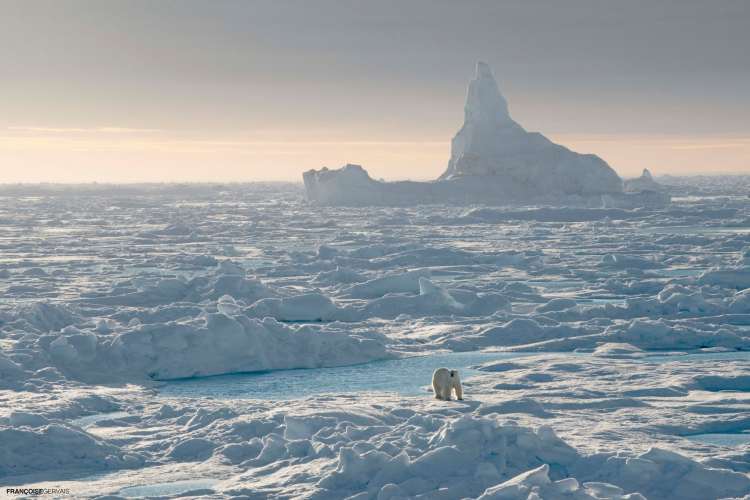
Adventures & Epic Scenery
You’ll also have the chance to experience incredible land and icescapes. From soaring icebergs, to spectacular mountains and glaciers, there are breathtaking panoramas at every turn – all under the Midnight Sun.
Activities to look forward to in Arctic spring include travelling across the sea ice by snowmobile and qamutik (traditional Inuit sled), snorkeling and kayaking at the floe edge, hiking, and more.
Conditions
Temperatures at this time of year range from -3 – 10°C (26 – 50°F) but can feel much warmer because of the 24-hour sun.
Experience the Arctic in spring on these trips:
Narwhal & Polar Bear Safari
Baffin Island Dive Safari
Ultimate Floe Edge Explorer
Summer – July and August
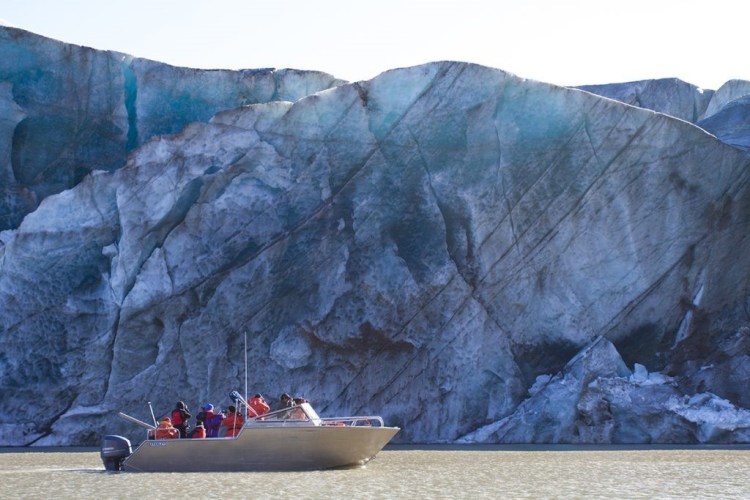
With warm weather, boundless opportunities for adventure, and incredible wildlife, Arctic summers are perfect for any type of traveller – including families!
Polar bears & whales
You’ll also have opportunities for wildlife viewing at this time of year, including chances to see polar bears on land and swimming, walrus, bowhead whales and more. Imagine the joy of see swimming polar bears as the gain access to the open water or catch bowhead whales as they arrive in their summer molting sites.
Outdoor summer fun
The Canadian Arctic is a great place for summer fun in nature, making this one of the best times to visit the Arctic. With the warmer weather, activities include boating, fishing and hiking among spectacular landscapes – including Canada’s most stunning national park, Auyuttiuq National Park.
Conditions
This season also experiences the Midnight Sun – with almost 24-hours of daylight in July and upwards of 17-20 hours of daylight in August. During this time, much of the ice has melted and the tundra blooms with colourful wild flowers and berries. Weather in this season is mild, with temperatures ranging from 10 – 20°C (50 – 70°F).
Learn more about summers in the Arctic here.
Experience the Arctic in summer on these trips:
Polar Bears & Glaciers of Baffin Island
Polar Bears & Whales of Cumberland Sound
Autumn – October and November
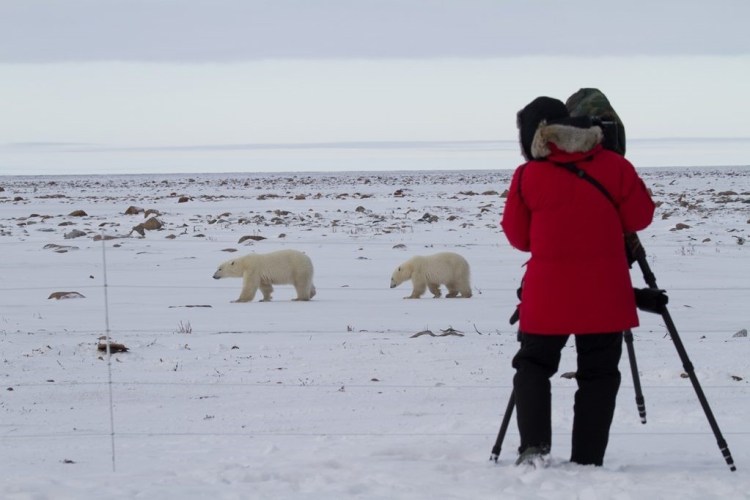
Autumn is a great time of year for travellers looking for up-close polar bear photography and chances to see the Northern Lights, or travellers looking to unplug and experience the peacefulness of the Canadian Arctic tundra.
Polar bears – Up-close on remote tundra
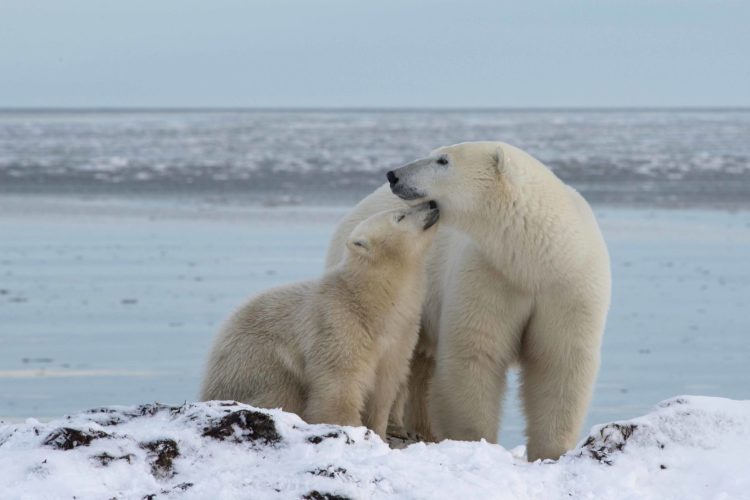
During this time of year temperatures begin to drop and polar bears congregate around the western coast of Hudson Bay waiting for freeze up so they can continue their migration north. This allows for incredible opportunities for polar bear viewing at ground level. Imagine the exclusive photography opportunity of seeing this enormous mammal walk past meters away while you safely observe from behind an unobtrusive electric fence. Other wildlife sighting possibilities include Arctic fox, Arctic hare and birds.
Northern Lights
If conditions are right, you’ll also have the chance to see the spectacular Northern Lights! As autumn comes to the Arctic the days begin to get shorter and that means better chances of seeing this incredible natural phenomena.
Conditions
Travelling at the beginning of the Arctic’s cold season can mean more extreme weather with average daily temperatures ranging between -5oC and -20oC (-4oF to +23oF). While cold, you can still have an enjoyable experience with the right gear! We offer a Polar Clothing Rental Package to keep you comfortable no matter what Mother Nature brings.
Experience Autumn in the Arctic on these trips:
Polar Bear Migrations Fly-In Photo Safari
Private Polar Bear Migration Safari
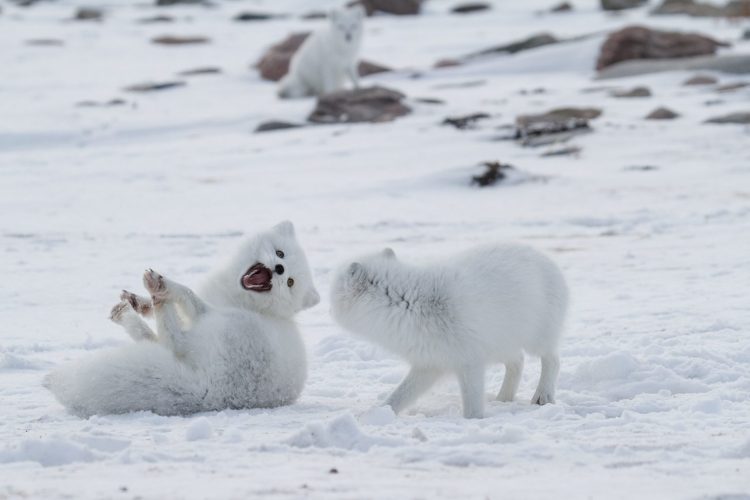
Whatever time of year you choose to travel, don’t forget to pack a camera! There are amazing photography opportunities at every turn. Get tips for photography in the Arctic here.
Our trips are determined by the cycle of life; wildlife migrations and natural phenomena. Scouted with expert insight from Inuit guides, we bring you the best of the Arctic at any time of year. See all our Arctic safaris here.
Still need help picking the best time of year to visit the Arctic, or the perfect trip for you?
Contact us to talk to one of our Arctic Travel Advisors. We can help you find the Arctic tour of your dreams, at an ideal time of year.
Want to plan a fully-customized private experience in any season?
We’d love to help you build your dream itinerary. Contact us today!


